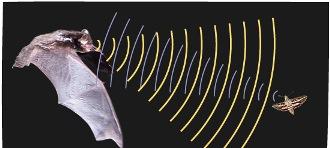Israeli researchers unlock secrets to sensory evolution of bats
Even erring on the side of vision in their estimates, the researchers found that echolocation was twice as effective as vision in detecting the insects in medium to low light. They also note that echolocation is unaffected by objects in the background, while visual range is three-to-five fold worse when it has to contend with obstacles like vegetation.
These results suggest that echolocation gives bats a huge evolutionary advantage, allowing them to track insects from further away and with greater accuracy at peak feeding time. Echolocation also, of course, allows bats to continue hunting into the night, when their competitors are blinded by darkness.
“We believe that bats are constantly integrating two streams of information — one from vision and one from echolocation — to create a single image of the world,” said Dr. Yovel, also of TAU’s Sagol School of Neuroscience. “This image has a higher definition than the one created by vision alone.”
Viva Sarah Press

